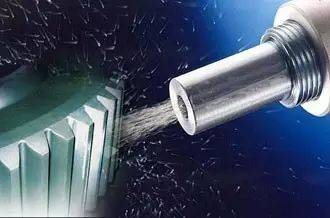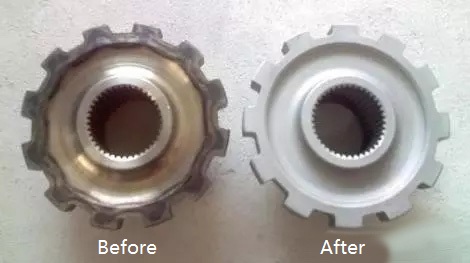 Sandblasting is a general term used to describe the act of propelling very fine bits of material at high-velocity to clean or etch a surface. Sand used to be the most commonly used material, but since the lung disease silicosis is caused by extended inhalation of the dust created by sand, other materials are now used in its place. Any small, relatively uniform particles will work, such as steel grit, copper slag, walnut shells, powdered abrasives, even bits of coconut shell. Due to the dangers of inhaling dust during the process, sandblasting is carefully controlled, using an alternate air supply, protective wear, and proper ventilation.
Sandblasting is a general term used to describe the act of propelling very fine bits of material at high-velocity to clean or etch a surface. Sand used to be the most commonly used material, but since the lung disease silicosis is caused by extended inhalation of the dust created by sand, other materials are now used in its place. Any small, relatively uniform particles will work, such as steel grit, copper slag, walnut shells, powdered abrasives, even bits of coconut shell. Due to the dangers of inhaling dust during the process, sandblasting is carefully controlled, using an alternate air supply, protective wear, and proper ventilation.
A sandblasting setup usually consists of three different parts: the abrasive itself, an air compressor, and a blaster nozzle. For etching and small object cleaning, a workstation to hold the piece of glass is also needed, as is some sort of collector to gather up excess dust. Sandblasting is primarily used for two somewhat different applications. The first of these is to clean a surface of anything that may be clinging to it. The second is to either etch or carve designs or words into glass or a similar material.
The first sandblasting process was patented in the US in 1870. As a cleaning method, it is often used for priming a surface for the application of paint or a sealant. When painting, one doesn’t want to trap dust, dirt, or bubbles in a previous layer of paint, or other imperfections under the new layer. By launching small bits of abrasive at the surface at a high speed, all imperfections are knocked loose and can then be easily washed off, creating an incredibly smooth surface upon which to lay the new layer of paint. Sandblasting may also be used for such projects as cleaning the hulls of ships or large structures such as the Golden Gate Bridge.
In decorating glass, sandblasting is a wonderfully popular technique, with few substitutes. While hand-etching is possible, it is incredibly time consuming and expensive, and laser-etching has a range of flaws which make it a questionable choice. There are two main ways in which sandblasting is used to decorate glass: etching and carving.
In glass etching, abrasive is blasted at the glass lightly to turn the glass semi-opaque. This ‘whiting’ or ‘snowing’ of the glass can be used to great effect to produce words or images. By adjusting the speed of the sandblasting and the angle from which the abrasive is being launched, differing shades can be created, allowing for some true works of art. Glass is carved by steadily sandblasting the surface through a stencil which protects the areas you don’t want to be carved out. Sandblasting as a technique for carving can be very nuanced, with differing depths and angles of cuts creating an array of lighting effects that may be quite beautiful.
The cost of sandblasting equipment depends greatly on the scope of the projects intended. A small home glass carving setup can be acquired relatively inexpensively, while a system with a cabinet capable of handling larger pieces of glass and more nuanced sandblasting can cost significantly more. A professional-level artistic sandblasting setup will likely be quite expensive. Industry-level sandblasting equipment also varies in cost, again depending on the scale and scope of the projects to be completed.

